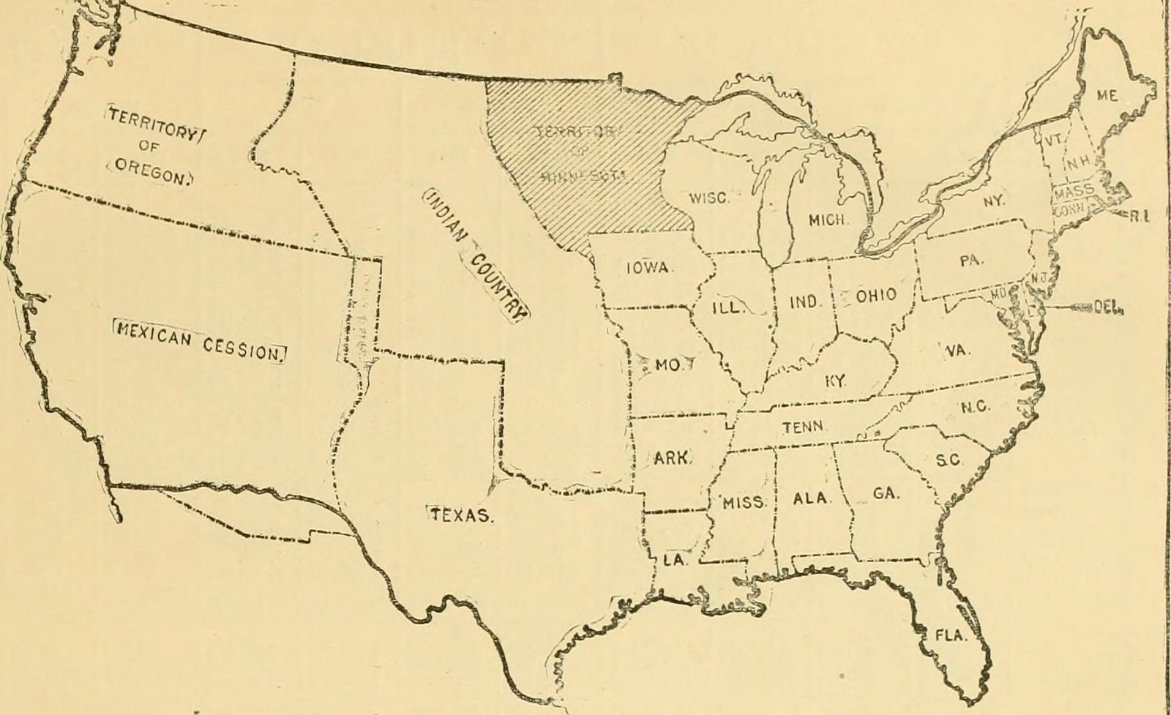1. Minnesota nice? Oh for cute’s sake! That’s just an ol’ stereotype, don’ cha’ know. Today on #50Weeks50Constitutions we’ve got a state with 2 conventions for one constitution. It was all because those silly men in St. Paul couldn’t get along . . .
2. MN was the last state formed out of the old Northwest Territory, under the NW Ordinance. But only the land east of the Mississippi (including good ol’ St. Paul). To the west, the land first came into U.S. hands with the Louisiana Purchase (including big time Minneapolis). 

3. Only a territory in 1849 (& 3 times the size of what it became), statehood quickly loomed. Minnesotans needed a constitution. There was an election of delegates to go to St. Paul & hammer out a draft. (Fun Fact: St Paul's original name was Pig's Eye).
growlermag.com/the-not-so-com…
growlermag.com/the-not-so-com…
4. But the Civil War also loomed & led to bad blood in the Passive Aggressive North (tbf there weren’t many Scandinavians yet, so perhaps Minnesotans were just Aggressive at this point). Roughly equal #s of Democrat & Republican delegates came to the convention hating each other. 

5. That hate exploded on the first day. After calling the convention to order the delegates of each party from then on out met separately. Two “conventions” moved forward with two different constitutions.
6. The two sides were VERY cognizant of what the other was doing, partly because the various drafts & proposed constitutional language were printed in the newspapers every day. So each “convention” could see the other’s handiwork & craft its own version in response.
7. Thus, the “Democratic Constitution” & “Republican Constitution” drafts weren't all that different. Still, to get a constitution something had to give. After weeks of separation & no reconciliation leaders of the 2 factions finally met in a conference committee of sorts.
8. Meeting late into the night they took the differences between the 2 drafts & hammered out a compromise. Each side wrote the result out in longhand. This produced 2 versions that were pretty identical but had numerous differences of typology & punctuation.
9. Afterward, the Republican version was the one that got to Congress first, so that is the one which Congress approved. In any case, the differences weren’t substantive.
10. And after all that, what did the constitution say? It was a grand document, following other Midwestern states of the time, with a long bill of rights, an explicit separation of powers clause, commitments to public education, & a standard governor & legislature.
11. There’s much else that could be said about the text from 1857, of course. Just one example is that Minnesota is one of a very few states to proclaim that lands in the state are “allodial” (that is, free from the tenurial rights of a feudal overlord).
12. But the people understood it wasn’t perfect, & there have been a number of amendments over the years. One important change a couple decades later limited the legislature’s ability to enact special laws, something it was rampantly doing for all kinds of favored constituencies. 

13. The language is particularly beloved at the Center for Judicial Engagement as it prevents judges from leaning on the legislature ("judicially determined w/o regard to any legislative assertion"). Unfortunately that hasn’t prevented the courts from almost entirely ignoring it.
14. Another interesting amendment was one protecting the right to farm & peddle from licensing. Minneapolis fined a peddler selling his melons without a license (which cost $125, a massive sum in those day). Some farmers fought back by campaigning for the amendment’s adoption. 

15. In the early 1970s there was a push to “modernize” the constitution, but not substantively. Provisions were in odd places & it was repetitive. After some careful editing (& cutting 1/3 of the words) the legislature asked the people to approve a “new” draft, passing in 1974.
16. Sources:
Mary Jane Morrison, The Minnesota State Constitution (2002)
Anderson & Lobb, A History of the Constitution of Minnesota (1921)
mnhs.org/library/consti…
Mary Jane Morrison, The Minnesota State Constitution (2002)
Anderson & Lobb, A History of the Constitution of Minnesota (1921)
mnhs.org/library/consti…
• • •
Missing some Tweet in this thread? You can try to
force a refresh









